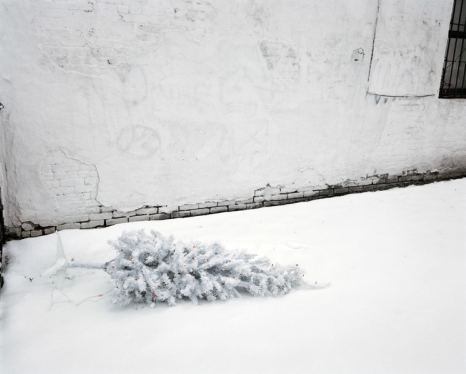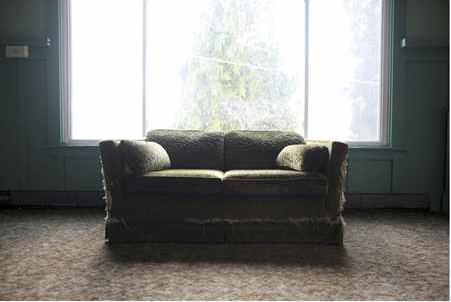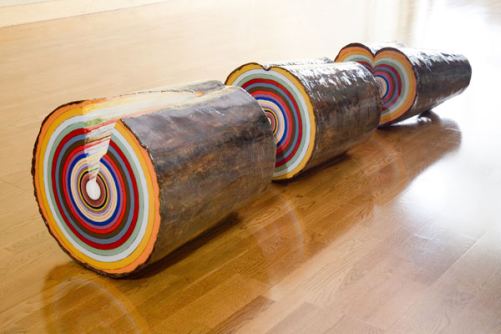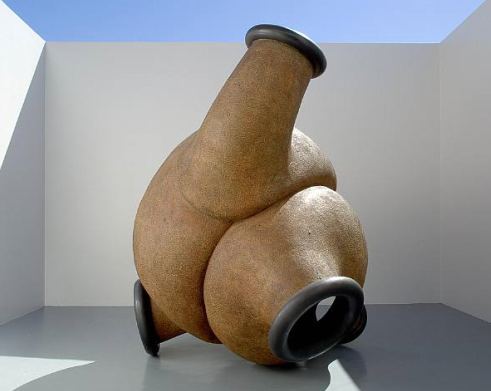
Uncategorized
Ted Bundy for the holidays
Lawrimore Project is offering a range of art objects as holiday gifts, priced under $1,000. It’s the gallery’s idea of a joke. Every gallery in Seattle has something under four figures. But the joke doesn’t end there. One of Lawrimore’s featured objects is Eli Hansen’s To Your Health Untitled (tincture), 2009, a small, clear glass bottle that serves as a portrait of Tacoma.
Containing chips of Western red cedar, soil from Port Madison and brick fragments from Ted Bundy’s childhood home, it’s a $600 portrait of small town noir. Who wouldn’t want a little Ted Bundy for the holidays?
 Zoe Strauss had a similar take on Tacoma when she was in town.
Zoe Strauss had a similar take on Tacoma when she was in town.
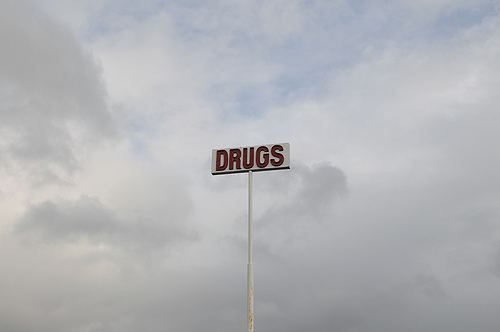 The recession has been a long dry run. Note to those who are flush: Time to support a gallery or two.
The recession has been a long dry run. Note to those who are flush: Time to support a gallery or two.
William T. Wiley – objects of scorn
Wiley was the William Powhida in the 1960s, before Powhida was born. Like Powhida a master of line, Wiley’s sympathies are underdog, even though he’s not blind to mange, fleas and failure.
Wiley’s Slant Step from 1966 bears this inscription:
this piece is dedicated
to all the despised unknown unloved people objects ideas that just don’t make it and never will, who have so thoughtlessly given their time and talent to become objects of scorn but maintain an innocent ignorance and never realize that you hate them.
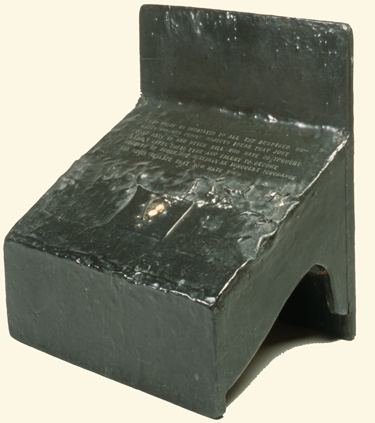
John Buck – message in a bottle
John Buck carves carnival worlds. Press his foot pedal to see heads of famous artists revolve with their
paintbrushes, their dripping watches and their trains coming out of
their foreheads.
Dividing his time between Montana and Hawaii, he favors a fast-growing white wood found in Hawaii and known as
Malaysian jelutong. Similar to cottonwood, jelutong is soft and pliant.
Each of Buck’s rough, chisel cuts eats into the wood and creates small
ripples of disturbance across the surface.
No matter how precise and detailed his carving becomes, it’s never
fussy or anonymous. Evidence of the artist’s hand is always there,
recorded in ragged little stabs.
A survey of his prints (with some paintings) is at the Bellevue Arts Museum, curated by Stefano Catalani from the collection of Portland’s Jordan D. Schnitzer.
Aside from carving, woodcuts are Buck’s strong suit, well represented here. The boldly articulated central figures are surrounded by knotted coils of representation that appear to derive from William T. Wiley. What is comic frenzy in Wiley becomes for Buck a crazy world sealed in a bottle and seen at an austere remove.
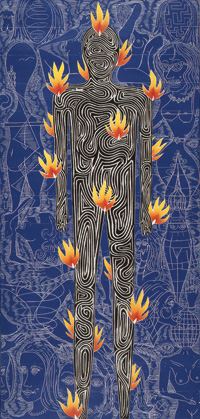
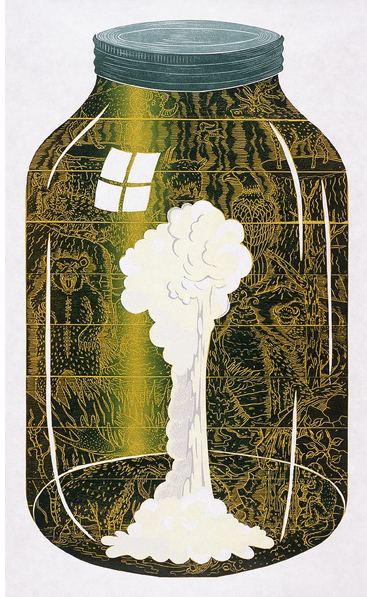
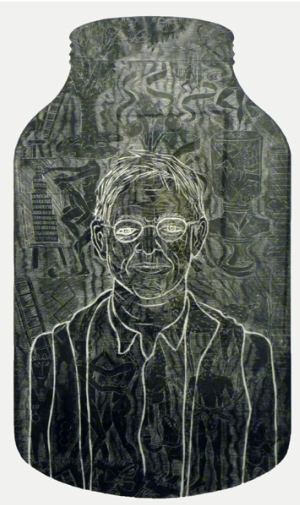 Through Feb. 28.
Through Feb. 28.
Robert Sperry – mud and foam
Sometime in the early 1990s I ran into Robert Sperry (1927 – 1998) in Oaxaco and commented on the brightness of his shoes, remarkable in a dusty town. His wife, Patti Warashina, rolled her eyes. Turns out, because there were half a dozen kids with shoe shine boxes in the town square and Sperry couldn’t bear to favor only one with his trade, every day he gave all a turn, big tip added. The day I saw him, a boy had lined up for seconds, but Sperry recognized him and said, “You already shined them.” In response, the boy spit on Sperry’s shoes and said, “Now they need another one.” Because the jokes he liked best tended to be at his expense, it was Sperry’s favorite story from his trip.
Untitled, Clay and glaze, 1983
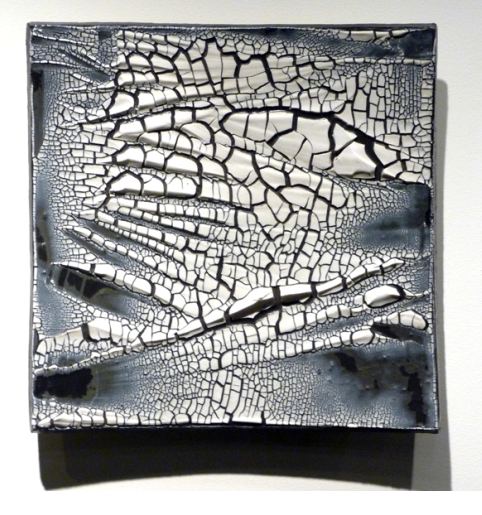 His retrospective, Bright Abyss, is at the Bellevue Arts Museum curated by Stefano Catalani and accompanied by a 270-page catalog with full color illustrations, written by Matthew Kangas. In light of the fact that catalogs are getting harder to find (the Seattle Art Museum’s astonishing Calder show doesn’t have one, for instance), BAM’s commitment to full service is admirable.
His retrospective, Bright Abyss, is at the Bellevue Arts Museum curated by Stefano Catalani and accompanied by a 270-page catalog with full color illustrations, written by Matthew Kangas. In light of the fact that catalogs are getting harder to find (the Seattle Art Museum’s astonishing Calder show doesn’t have one, for instance), BAM’s commitment to full service is admirable.
Untitled, Stoneware with slip
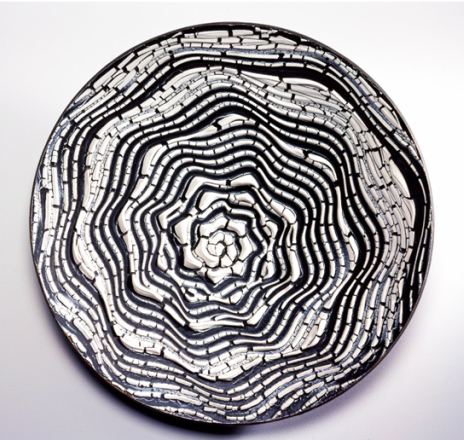 With Warashina and Howard
With Warashina and Howard
Kottler, Sperry created a ceramics department at the University of
Washington that captured nationwide recognition.
Big thanks to BAM for this show, even though it sits in the museum’s dread second floor, curling out of dark galleries into dark hallways. The only adequate gallery spaces at BAM are on the third floor, currently housing an exhibit of John Buck’s woodcuts. I would have reversed these shows, as woodcuts are harder to ruin. Just hang them up in a line and turn on the lights.
At the very least, BAM could have painted the second floor galleries white. Matching gallery walls with colors from the art is a bad decorator’s trick. Sperry is dark enough already.
He was an artist with one big idea. Unfortunately, the exhibit generously samples all his ideas, diluting their impact. (As a filmmaker, he was an academic documentarian. As a funk artist, unlike Warashina and Kottler, he was an also-ran.)
In a Sperry retrospective, the strongest work needs to be like the rabbit swallowed whole by a snake, a huge bulge with flattened representations of other things at either end. Wouldn’t it be better to leave out funk, film, prints and public art models? When presenting an artist whom a lot of people even in the Northwest have already forgotten, hit us with your best shot. Sperry deserves nothing less.
Untitled, Stoneware, black glaze, white slip, 1986
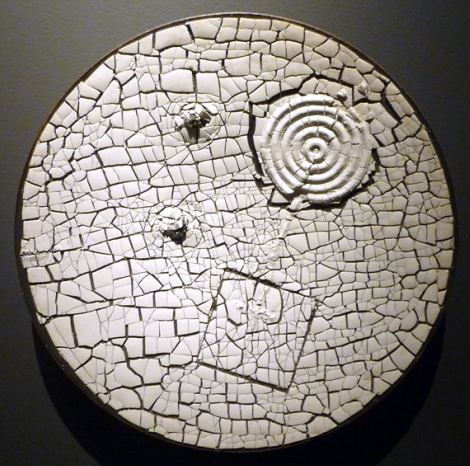 His glory is his mud and foam, his crackled white slip on ash-gray stoneware plates, platters and ceramic tiles. The force of gesture
His glory is his mud and foam, his crackled white slip on ash-gray stoneware plates, platters and ceramic tiles. The force of gesture
frozen on the surface distills both freedom and a certain kind of Asian
restraint. Within narrow restraints, he opened up a range of
aesthetic possibilities, usually in flat gray under cracked white but sometimes gold patterned with white.
Platter
glaze, crackle glaze 1975
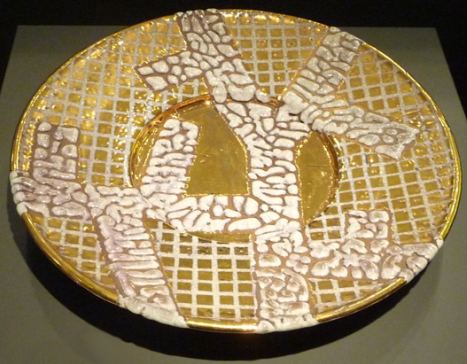 Through Jan. 31.
Through Jan. 31.
John Storrs to John Buck
John Storrs, Forms in Space, 1927 Stainless steel and copper
20 1/2 x 4 x 5/8 in. (52.1 x 10.2 x 4.1 cm)
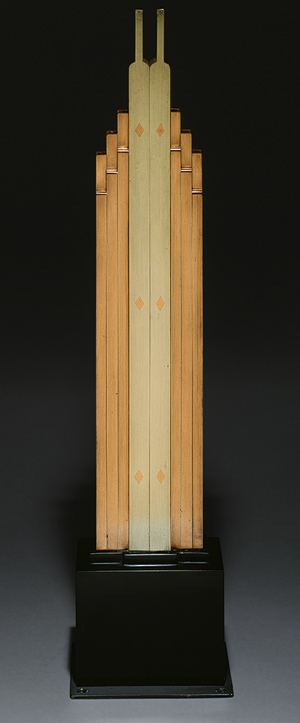 John Buck,
John Buck,
Skyline edition 4/15
2000 – 2002
Four-color woodcut
92 x 37 in. In his exhibit at the Bellevue Arts Museum through Feb. 28.
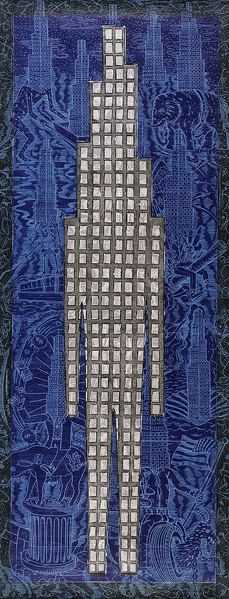
Tis the season – the tree as fetish
The transformation of waste
Art extends from order to chaos and generates waste as it transforms it.
Hans Haacke’s News on November 5th, 2008, when Art of Participation opened at SFMOMA
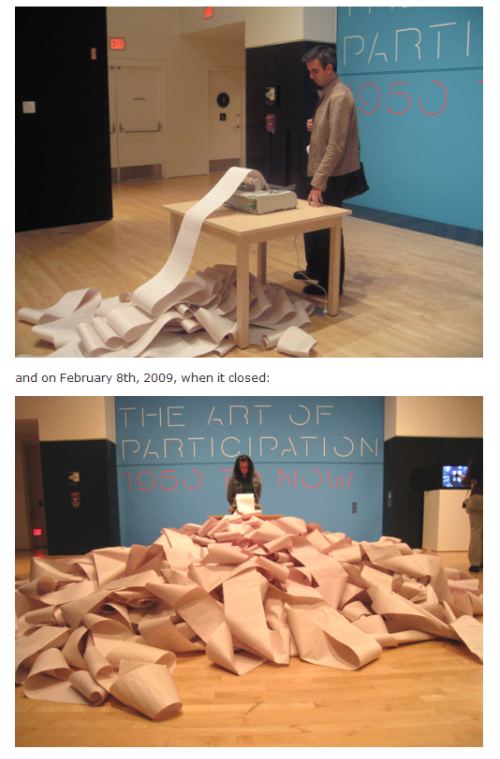 Christian Marclay, Tape Fall, 1989
Christian Marclay, Tape Fall, 1989
 Claude Zervas, Cumulus, 2002
Claude Zervas, Cumulus, 2002
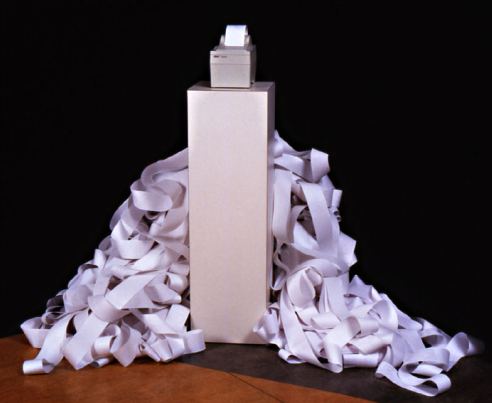
The stanchion as its own fading star
The stanchion signifies the secular sacred. It is a barrier beyond which the common cannot pass. Thanks to Hans Haacke, it also refers to whoever is in charge of subverting the common good. SuttonBeresCuller pumped it up to drag it down. Theirs is bronzed and ludicrously heavy. What it guards droops on the wall behind it, an empty frame sagging like a leaky parade float.
To bronze an object is to cherish it, a baby’s shoe, a fishing lure, a first blanket. What SuttonBeresCuller cherish is the absurdity of elitism, the attempt to sever ties that bind and assert the ones the separate: this Leonardo, not the one on its right; this arthritic old king, not that blooming young peasant.
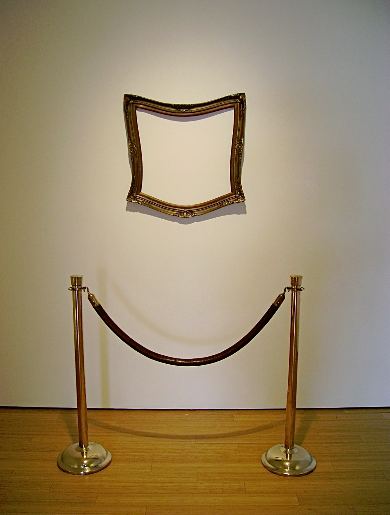 Part of their exhibit at Lawrimore Project, through Dec. 19. My review here.
Part of their exhibit at Lawrimore Project, through Dec. 19. My review here.
The 13-year-old art critic
Tavi is too young to drive or attend high school, never mind belly up to a bar for a drink. If she were served, the bar would be history. What she is not too young to do is to write about the art side of fashion and make her observations matter.
She has voice, rhythm, confidence and depth, all present and accounted for on her blog, Style Rookie, which she started when she was 12.
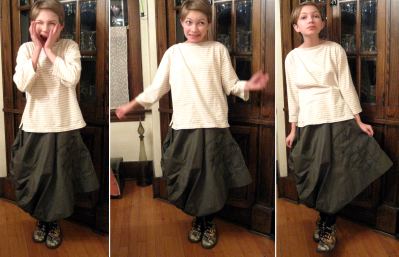 Here’s her description of herself:
Here’s her description of herself:
Tiny 13 year old dork that sits inside all day wearing awkward jackets and pretty hats. Scatters black petals on Rei Kawakubo’s doorsteps and serenades her in rap. I have no where near 4 million readers. Rather cynical and cute as a drained rat. In a sewer. Farting. And spitting out guts.
She aced her interview last year on Teen Vogue.



